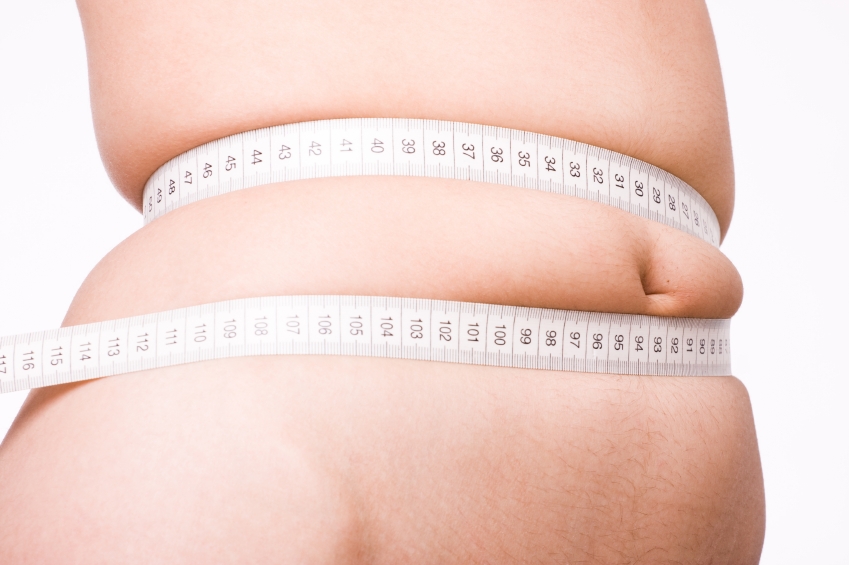Childhood Obesity By The (Big) Numbers
Childhood obesity is epidemic. We see evidence of it every day – at mall food courts, in video arcades, at school bus stops. But just how bad is it and how much is it costing us?
‘Child Obesity: The Way Forward’ is the theme of the March 2010 issue of Health Affairs, a leading health policy journal. In a special briefing held in Washington, D.C. to highlight the journal issue, authors summarized their work, policy briefs were circulated, and passionate individuals shared questions and experiences. Here are some key numbers from the meeting and journal papers to quantify the magnitude and implications of what we see every day. (Full references are below.)
How bad is the childhood obesity epidemic?
- Nearly one in three U.S. children and adolescents aged 2 through 19 years are overweight or obese (more than 23 million youth). [Odgen 2010]
- About one in six children (16.4%) ages 10 to 17 are obese. [Bethell, Singh]
- Nearly one in three very young children who enroll in Head Start programs are overweight or obese. [Tarullo]
- Over the past 40 years the rates of overweight and obesity have more than quadrupled among children ages 6 to 11, and have more than tripled for adolescents ages 12 to 19. [Data spanning from 1963 to 2004; Ogden 2002, 2006]
Disparities, and disparities within disparities
- Across states, there is a wide range in the prevalence of overweight and obesity among children ages 10-17, ranging from 23.1% in Utah and Minnesota to 44.4% in Mississippi. [Bethell]
- Between 2003 and 2007, the disparity in the prevalence of overweight and obesity in U.S. children ages 10-17 grew wider between publicly and privately insured children, lower-and higher-income children, and Hispanic and non-Hispanic children. [Bethell]
- Nationally, in 2007, 44.8% of children in poverty were overweight or obese, compared to 22.2% of children living in households with incomes above 400% of poverty. The disparities based on poverty vary two- to threefold across states. [Bethell]
- Illustrative of the substantial disparities that exist within states as well as among states, Minnesota had the highest disparity ratio (2.61) between children with private vs. public health insurance, despite having one of the lowest overall overweight/obesity rates nationally. [Bethell]
Food and drink
- Sugar-sweetened beverages and 100% fruit juice comprise 10-15% of the total calorie consumption of children and adolescents (ages 2-19). [Frieden, Wang]
- Americans’ average daily calorie intake in 2007 was 400 calories higher than in 1985, and 600 calories higher than in 1970. [Wallinga]
- The inflation-adjusted price of carbonated soft drinks decreased ~24% from 1985 to 2000, while the prices of fresh fruit and vegetables rose 39% (based on USDA data). [Wallinga]
- Less than one in ten Americans meet the levels of fruit and vegetable consumption recommended in the 2005 Dietary Guidelines for Americans. [Wallinga]
Physical activity
- Only 42% of children ages 6-11 years, and only 8% of adolescents’ ages 12-19 years, obtain the recommended 60 min/day of physical activity. [Troiano]
- A quarter of high school students do not meet recommended levels of physical activity (60 minutes of moderate-to-vigorous activity per day) on any day. [Frieden, Eaton]
- Less than 4% of adults engage in enough physical activity to improve health, although approximately 40% of adults claim they do. [Frieden, Troiano]
- The odds are 1.21 times greater for a child to be overweight or obese if they do not participate in sports and other activities outside of school. [Bethell]
- The odds are 1.21 times greater for a child to be overweight or obese if they do not have local access to a park or recreation center. [Bethell]
Lifestyle & environment
- Children who have a TV in their bedroom or watch more than 2 hours of TV on average per day are more than 1.5 times likely to be overweight or obese. (This relationship holds when socioeconomic and other factors are adjusted for). [Bethell]
- For U.S. children ages 10-17, 35.0% have no access to recreation or community centers; 26.7% have no neighborhood access to sidewalks or walking paths; and 19.2% have no access to parks or playgrounds (as reported by their parents). [Singh]
- Children living in neighborhoods with the most unfavorable social conditions are 50% more likely to be physically inactive; 52% more likely to watch TV more than 2 hours a day; and 65% more likely to engage in recreational computer use of more than 2 hrs/day, as compared to children living in most favorable social conditions (based on 2007 data). [Singh]
- Children living in unsafe neighborhoods have 61% higher odds of being obese and 43% higher odds of being overweight than children living in safe neighborhoods (after adjusting for age and sex). [Singh]
- Children living in neighborhoods with no access to sidewalks or walking paths, parks or playgrounds, and recreation or community centers, have 32%, 26% and 20% higher adjusted odds of obesity than children in neighborhoods with access to these amenities, respectively. [Singh]
Health
- Approximately 70% of obese youth have at least one additional risk factor for cardiovascular disease, such as high blood pressure or high cholesterol. Nearly 40% have at least two additional risk factors. [Frieden]
- Children who are obese after age 6 have greater than a 50% chance of being obese as adults, even if their parents are not obese. [Frieden]
School achievement
- The odds are 1.32 times greater for an overweight or obese child to repeat a grade in school. [Bethell]
- The odds are 1.59 times greater for an overweight or obese child to miss more than 2 weeks of school during the school year. (These data do not include children who have special health care needs.) [Bethell]
How much does obesity cost?
- Almost 10% of all medical costs in 2008 were attributable to obesity. [Finkelstein]
- The estimated cost of treating obesity-related illness was $147 billion/year in 2008. [Finkelstein]
- The direct costs of childhood obesity include annual prescription drug, emergency room, and outpatient costs of $14.1 billion, as well as inpatient costs of $237.6 million. [Cawley]
- Obesity-related job absenteeism costs $4.3 billion annually. [Cawley]
- The decrease in productivity in obese individuals while at work (presenteeism) totals $506 per obese worker per year. [Cawley]
- Obesity-related illnesses cost Medicare $19.7 billion and Medicaid $8 billion in 2008. [Cawley]
- Private health insurance plans paid $49 billion to treat obesity-related illness in 2008. [Cawley]
- According to mathematical modeling, U.S. children who were age twelve in 2005 will incur an estimated $2.77 billion in attributable medical expenditures over their lifetime. The twelve-year-olds who were overweight and obese and become obese adults will incur an estimated additional $3.47 billion in medical expenditures. Further mathematical modeling indicates a one-percentage point reduction in obesity (from 16.3% to 15.3%) in children who were age 12 in 2005 would save $260.4 million in total medical expenditures. [Trasande]
What numbers do you find the most frightening?
What numbers are you going to change?
Definition of child overweight and obesity
Child overweight and obesity are based on body mass index, or BMI, which is based on height and weight measurements. Overweight is defined as the 85th through 94th percentiles of age- and sex- specific BMI; obese is defined as the 95th or greater percentile of age- and sex- specific BMI. The CDC has information on BMI for children and teens, including a Child and Teen BMI Calculator.
References
- Bethell, C., et al. National, state, and local disparities in childhood obesity. Health Affairs, 29(3): 347-356, 2010. doi: 10.1377/hlthaff.2009.0762
- Cawley, J. The economics of childhood obesity. Health Affairs, 29(3): 364-371, 2010. doi: 10.1377/hlthaff.2009.0721
- Eaton, D. K., et al. Youth risk behavior surveillance — United States, 2007. MMWR Surveillance Summaries 57(4): 1-131, 2008.
- Finkelstein, E. A., et al. Annual medical spending attributable to obesity: Payer-and service-specific estimates. Health Affairs, 28(5): 357-363, 2009. doi: 10.1377/hlthaff.28.5.w822
- Frieden, T., et al. Reducing childhood obesity through policy change: acting now to prevent obesity. Health Affairs, 29(3): 357-363, 2010. doi: 10.1377/hlthaff.2010.0039
- Odgen, C. L., et al. Prevalence of high body mass index in US children and adolescents, 2007-2008. JAMA 303(3):242-249, 2010. doi:10.1001/jama.2009.2012
- Ogden C. L., et al. Prevalence of overweight and obesity in the United States, 1999-2004. JAMA 295(13):1549-55, 2006.
- Ogden C. L., et al. Prevalence and trends in overweight among US children and adolescents, 1999-2000. JAMA 288(14):1728-32, 2002.
- Singh, G. K., et al. Neighborhood socioeconomic conditions, built environments, and childhood obesity. Health Affairs, 29(3): 503-512, 2010. doi: 10.1377/hlthaff.2009.0730
- Tarullo, L., et al. Beginning Head Start: Children, families and programs in fall 2006 (PDF). FACES 2006 baseline report, Mathematica Policy Research, Inc., December 2008. (Available at www.acf.hhs.gov/)
- Trasande, L. How much should we invest in preventing childhood obesity? Health Affairs, 29(3): 372-378, 2010. doi: 10.1377/hlthaff.2009.0691
- Troiano, R. P., et al. Physical activity in the United States measured by accelerometer. Med Sci Sports Exerc, 40(1): 181-188, 2008. doi: 10.1249/mss.0b013e31815a51b3
- Wallinga, D. Agricultural policy and childhood obesity: a food systems and public health commentary. Health Affairs, 29(3): 405-410, 2010. doi: 10.1377/hlthaff.2010.0102
- Wang, Y. C., et al. Increasing caloric contribution from sugar-sweetened beverages and 100% fruit juices among US children and adolescents, 1988–2004. Pediatrics, 121(6): e1604-e1614, 2008. doi: 10.1542/peds.2007-2834
Health Affairs
- Table of contents from ‘Child Obesity: The Way Forward’ thematic issue (This issue is made possible with support from the Robert Wood Johnson Foundation)
- Child Obesity Policy Briefs
- Video and slides from the March 2, 2010 briefing
Related posts










[…] Childhood Obesity By The (Big) Numbers […]
[…] Childhood Obesity By The (Big) Numbers […]
[…] Carol Torgan reports on the most recent Health Affairs issue in her blog, summing up the articles in that journal relating to childhood obesity statistics. […]
[…] in America, but most people do not understand the gravity of the situation, especially that of obesity in children. In fact, the Center for Disease Control, or CDC, has labeled childhood obesity an epidemic. What […]
[…] Childhood Obesity By The (Big) Numbers […]